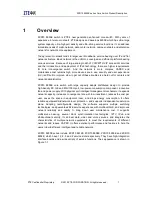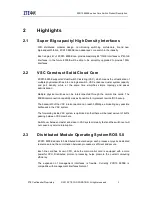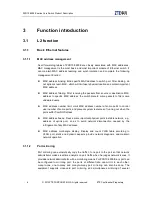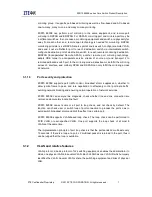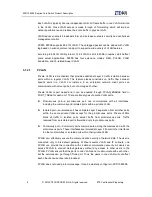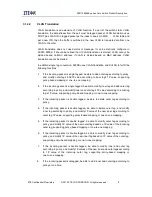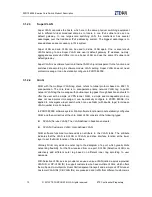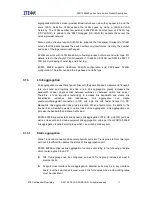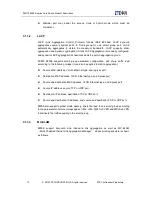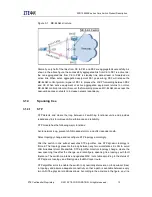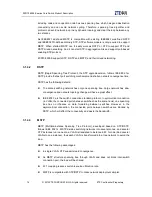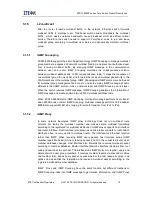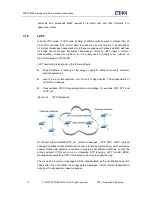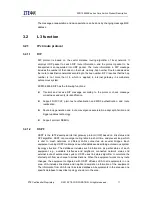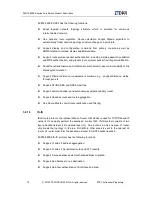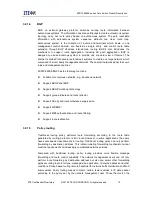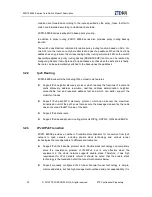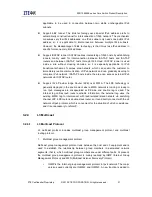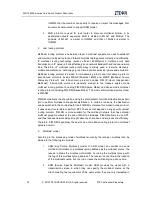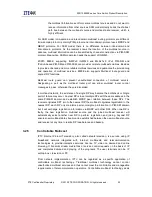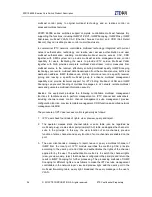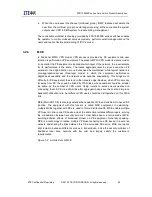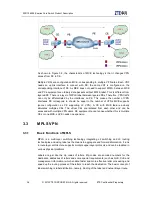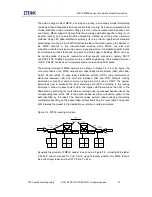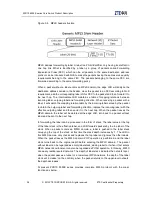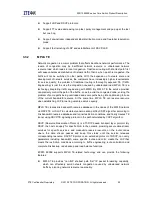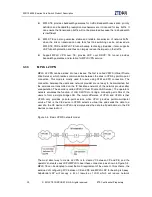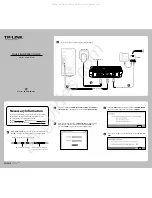
ZXR10 8900E series Core Switch Product Description
ZTE Confidential Proprietary
© 2013 ZTE CORPORATION. All rights reserved.
15
3.1.5
L2 multicast
After the router forwards multicast traffic, in the network, Ethernet switch forwards
multicast traffic to multicast user. Traditional switch usually broadcasts the multicast
traffic , which wastes network bandwidth, cause broadcast storm and affect normal
service. Therefore the switch needs to support L2 multicast so as to join and leave
multicast group according to multicast user status and dynamically maintain multicast
group.
3.1.5.1
IGMP Snoooping
ZXR10 8900E supports the L2 multicast technology IGMP Snooping to manage multicast
group members, suppress L2 network multicast flooding, and prevent unauthorized user
from receiving multicast traffic. By snooping IGMP message in the communication
between user and router, IGMP Snooping maintains the correspondence relation
between multicast address and VLAN correspondence table. It maps the members of
one multicast group to one VLAN, and forwards the received multicast packet only to the
VLAN members of the multicast group. IGMP Snooping and IGMP protocol are both used
for multicast group management and control, and both employ IGMP message. What is
different is that IGMP protocol runs on network layer and IGMP Snooping on link layer.
When the switch receives IGMP message, IGMP Snooping analyzes the information of
IGMP message and create and maintain L2 MAC multicast address table.
When ZXR10 8900E starts IGMP Snooping, multicast message performs L2 multicast;
when 8900E does not start IGMP Snooping, multicast message performs L2 broadcast.
8900E also support MLDv1/v2 snooping for smooth transition from IPv4 to IPv6.
3.1.5.2
IGMP Proxy
In some network topologies, IGMP proxy technology does not run multicast route
protocol, but learns the multicast member and makes simple multicast forwarding
according to the registered for multicast distribution. IGMP proxy supports host interface
and router interface. Host interface (also known as uplink interface) points to root node of
distribution tree, namely, uplink to multicast router. The interface runs the host function
rather than IGMP. When receiving IGMP query packet, host interface sends IGMP
member report. Multicast joining or leaving packet is sent to the connected router when
member database changes. Host interface also forwards the received multicast packet
according to member database. Router interface (downlink interface) deviates from root
node and downlinks to user host. The interface runs IGMP protocol to register, query and
delete downlink user group members. It receives member reports, creates and modifies
one member form, sends query packet, queries whether the host leaves its group, and
uplinks and downlinks the forwarded and received multicast packet according to the
registered multicast member database.
IGMP
Proxy and IGMP Snooping have the same function but different mechanism:
IGMP Snooping looks into IGMP message to get relative information, and IGMP Proxy
Содержание ZXR10 8900E series
Страница 1: ...Operator Logo ZXR10 8900E series Core Switch Product Description ...
Страница 2: ......
Страница 10: ......

